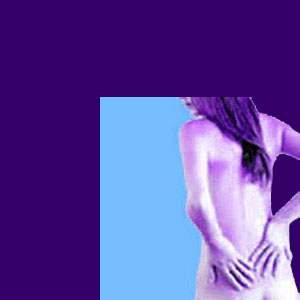
Back and pelvic pain is a relatively common combination of symptoms which occur in the lumbar region, as well as in the various areas of the pelvic girdle. Pelvis pain is much more prevalent in women than in men, supported by the wide range of reproductive pain syndromes which may reside in a female’s far more complex anatomy.
It is very important to get an accurate diagnosis when it comes to unexplained pain anywhere in the body, especially when pain is experienced in the internal organs. Pelvic pain can be an indicator of serious health concerns in some circumstances, but may be harmless in others. Often, the only way to know the difference between significant pelvic pain and inconsequential symptoms is by eliminating all the possible pathological factors and seeing what potentially causative and/or contributory processes may remain.
This essay investigates the facts of pain in the back and pelvis region.
Back Pain Causing Pelvic Pain
Certain conditions in the lower back can cause direct or sympathetic pain in the pelvic region:
Muscular injury is the most common cause of pelvic and lower back pain. A pulled, strained or sprained muscle or ligament can cause pain throughout the pelvic region.
Pinched nerves leading to the pelvis and pelvic organs can certainly cause pain in the front and rear of the lower body.
Some varieties of central spinal stenosis may enact symptoms in the pelvic region, as well as in many other areas of the anatomy.
Warning: Incontinence, pain in the anus or genitals, or general pelvic numbness can be an indicator of cauda equina syndrome. This condition must be treated immediately, since damage to many lower body systems and neurological structures may elicit lasting effects.
Pelvic Pain Causing Back Pain
Health problems in the pelvic area can also cause direct or sympathetic pain in the lower back, buttocks, and legs. These symptoms often resemble sciatic nerve pain and can be difficult to diagnose. Make sure to report any new or changing pains to your doctor.
Many women with reproductive organ conditions also suffer related low back pain. The diagnoses can range greatly, but once treated successfully, most women do enjoy complete symptomatic amelioration in both locations.
Spine and Pelvic Pain Concerns
The majority of all pelvic pain is experienced by women. Pelvic pain in men is usually due to some muscular injury and is rarely serious. However, there are some possible causes of pelvic pain in men that might indicate a serious health problem. Typical causes of pelvic pain can include: Irritable bowel syndrome, prostatitis, ovarian problems, uterine conditions, chronic pelvic pain syndrome, pelvic adhesive disease, bladder infections, sexually transmitted diseases, endometriosis, menstrual pain and pelvic misalignment.
Back and Pelvic Pain Guidance
The nerves in the lower back are often involved in chronic back and pelvis pain. Compressed nerve conditions can create a variety of symptoms affecting the lower back, pelvis and abdomen. However, never assume that pain is being caused by a problem in the back. Make sure to report all symptoms to your doctor, even if they are embarrassing or sensitive. Do not take chances with self diagnosis. Seek out proper medical attention to determine the true cause of your pain.
Remember also that some pelvic pain syndromes might have a mindbody source, as well. This may exist with psychogenic low back pain or with structurally-induced back pain. Due to the complexity of accurately diagnosing stress-related pain conditions, it is worth considering this possible source of pain for all unresponsive symptom syndromes.




